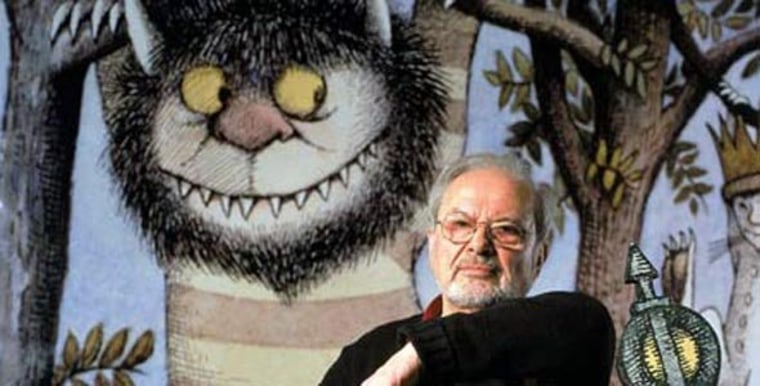The old adage "never meet your heroes" does not apply here. You should meet Maurice Sendak-- author, illustrator, freaker-out-of-children. And you can do it here. Sendak has given a moving and memorable interview to the Guardian in which he explains how the grotesqueness of his characters came from his childhood.
Sendak shakes his head beneath the low-beamed ceiling, in this room full of art and old rugs. "I can't believe I've turned into a typical old man. I can't believe it." He smiles and his face transforms. "I was young just minutes ago."To his millions of readers, of course, Sendak will always be young, a proxy for Max in Where the Wild Things Are, who runs away from his mother's anger into the consoling realm of his own imagination. There are monsters in there, but Max faces them down before returning to his mother for reconciliation and dinner. Sendak's own exile took rather longer to resolve. The monsters from Wild Things were based on his own relatives. They would visit his house in Brooklyn when he was growing up ("All crazy – crazy faces and wild eyes") and pinch his cheeks until they were red. Looking back, he sees how desperate they all were, these first-generation immigrants from Poland, with no English, no education and, although they didn't know it in 1930, a family back home facing extinction in the concentration camps. At the time, all he saw was grotesques.That included his parents. If he had come from a happy home, says Sendak, he would never have become an artist, at least not the kind of artist he is. Sendak's picture books acknowledge the terrors of childhood, how vicious and lonely it can be...There was a partial reconciliation with his parents, a moment of understanding. They never made much of his work except once, when he was asked to illustrate a set of stories by Isaac Bashevis Singer, winner of the Nobel prize for literature in 1978. They were proud of that, he says. For the illustrations, Sendak went back to the family album. "There were the photographs my father had of his younger brothers, all handsome and interesting-looking, and the women with long hair and flowers. And I went through the album and picked some of my mother's relatives and some of my father's and drew them very acutely. And they cried. And I cried. So there was that. And there still is that."
Click through for Sendak's feelings about Republicans, his partner of 50 years, e-books and Gwyneth Paltrow. Also, more beautiful sentences like "I refuse to cater to the bull@!$%# of innocence."
(Photo: PBS)
